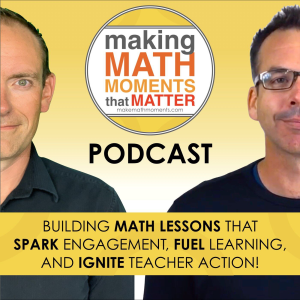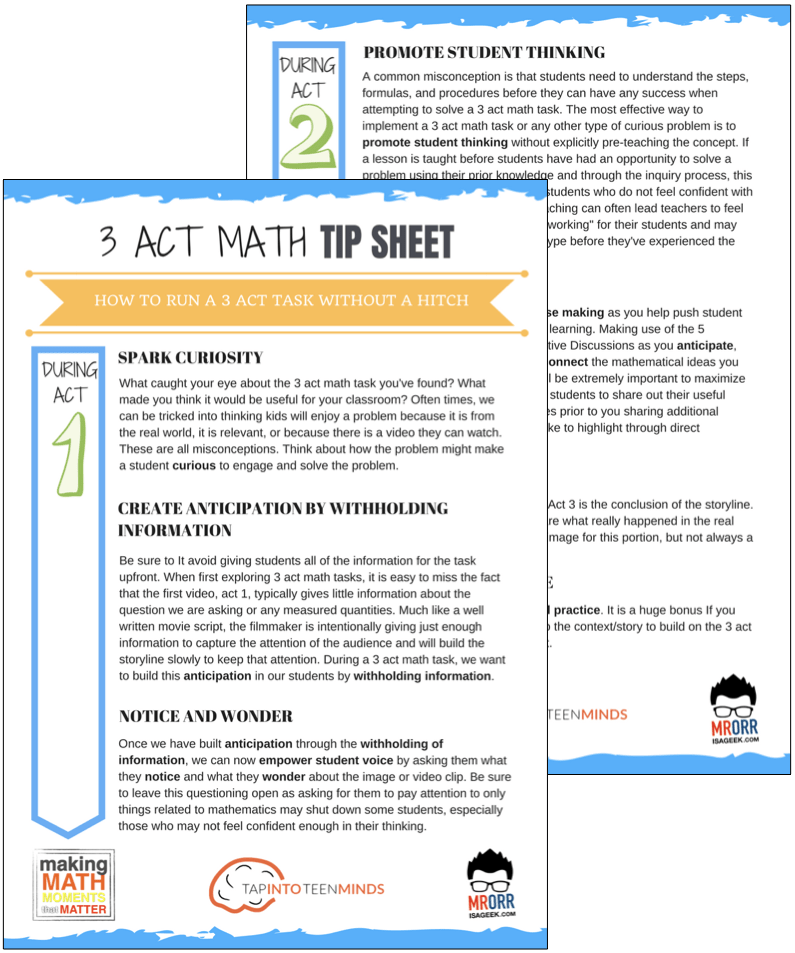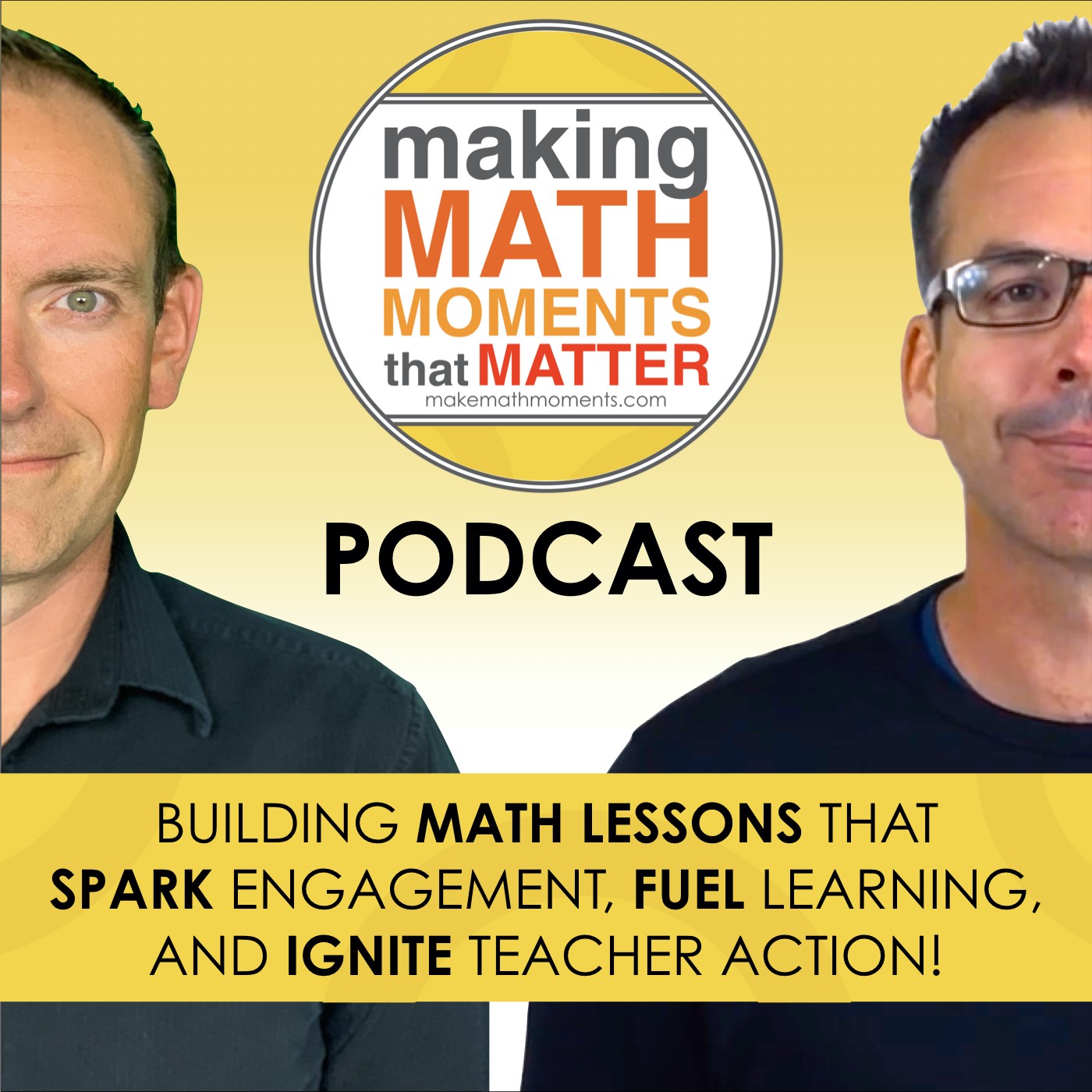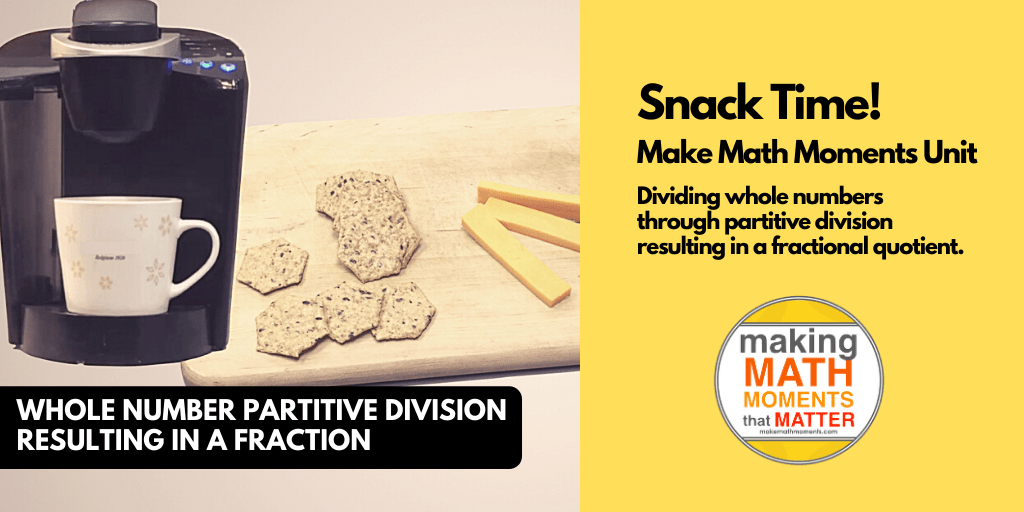Episode #304: Fix Your PD Sessions: Swap Confusion for Clarity | Mathematics Coaching and Training Series
LISTEN NOW HERE…
OR JUMP TO YOUR FAVOURITE PLATFORM
WATCH NOW…
Episode Summary:
Have you ever been in a PD session where the goals were unclear, and the entire experience felt scattered? It’s a common issue that leaves participants frustrated and disengaged.
Clarity is the key to transforming professional development sessions into impactful learning experiences. Research by John Hattie shows that teacher clarity significantly affects learning outcomes, and the same principle applies to PD. When facilitators clearly articulate their objectives, participants are more engaged and able to apply what they learn.
Imagine facilitating a PD session where participants know exactly what they will walk away with, how it will solve their real classroom challenges, and why it matters.
By using clear goals, transparent communication, and framing content around participants’ needs, you can create sessions that inspire lasting, meaningful change.
Ready to fix your PD sessions? Listen in. Start by outlining clear objectives, connecting them to participants’ needs, and guiding them through the process with transparency and purpose. Swap confusion for clarity, and watch your PD sessions transform into powerful learning experiences.
You’ll learn:
- Learn how setting clear learning goals can transform your teaching approach and student outcomes.
- Discover a new coaching model that helps teachers tackle classroom challenges through collaboration and reflection.
- Gain insights into a student-centered approach that encourages productive struggle and deepens mathematical understanding.
Don’t miss this opportunity to elevate your teaching—listen to the episode now and pre-order Peg Smith’s new book to start implementing these strategies in your classroom!
Resources:
- Key Considerations for Unlocking Impactful Professional Development For K-12 Math Educators [Change to blog post link]
- Assessment For Growth: A Blueprint Course For Standards Based Grading in Math Class
- Make Math Moments Problem Based Lessons & Units
Attention District Math Leaders:
K-12 Math Coordinators, Coaches, Directors and Math Leaders. Get Professional Development Support from Make Math Moments
Learn how you can create, coordinate, and implement an aligned school and district math action plan for improved student success.
So that you can create long term sustainable student success in mathematics and proficiently & pedagogically strong educators.
Book a call with us to learn how we can not only help you craft, refine and implement your district math learning goals, but also provide all of the professional learning supports your educators need to grow at the speed of their learning.
Episode Summary:
Whether you’re a teacher, administrator, or instructional coach, you’ve likely been in a PD session that just didn’t hit the mark. Maybe the objectives were unclear or the direction felt scattered. Here, we’ll break down how to avoid that and share strategies, supported by research, to help you become a more effective facilitator.
The first thing we need to address is clarity. As a facilitator, do you have a rock-solid understanding of what you want participants to walk away with? Can you clearly articulate that? Clarity is key to the success of any PD session, just like in the classroom.
Connecting Clarity to Learning Outcomes
John Hattie’s research shows that teacher clarity significantly impacts student learning outcomes, and the same applies to professional development and for designing math coaching sessions.
Just like drafting a learning goal for your students, you need to define what lasting and enduring understanding you hope to establish for your adult learners.
For example, if your goal is to connect mathematical representations, your objectives might sound like:
- Understand that all elementary mathematics can be represented visually.
- Recognize that certain models, like the array, number line, and ratio table, are versatile across many situations.
- Understand that multiple representations promote access for all learners and enhance conceptual understanding – critical for some, but good for all.
- Recognize that solving a problem in multiple ways demonstrates mastery and critical thinking.
Transparency and Long-Term Objectives
While these objectives may seem ambitious for a single PD session or a math coaching session, they can serve as long-term goals to work toward collaboratively. Clearly defined learning objectives empower you to facilitate with greater transparency and purpose.
For added clarity in your sessions, consider using a strategy inspired by Dale Carnegie’s speech-writing formula: “Tell the audience what you’re going to say, say it, then tell them what you’ve said.” Start by clearly outlining your objectives. What do you want participants to take away?
How will this session help them address the challenges they face in their mathematics classrooms? By offering a clear big picture at the outset, you enable participants to engage with confidence and focus. Keep in mind that your participants don’t have the road map—show them the destination upfront, so they can relax and trust that the work will be meaningful.
It’s not just about what you want them to learn—frame those objectives in terms of their needs. Teachers are busy and need to know how your session will solve real problems they face. Connect emotionally, and you’ll earn their attention and trust.
Recap: Keys to Effective PD Sessions
- Be clear about your objectives.
- Share those objectives with your participants upfront.
- Frame the objectives around their needs and challenges.
Be Our Next Podcast Guest!
Join as an Interview Guest or on a Mentoring Moment Call

Apply to be a Featured Interview Guest
Book a Mentoring Moment Coaching Call
Are You an Official Math Moment Maker?

FULL TRANSCRIPT
We are going to explore a consideration for unlocking really effective professional development. So I’m sure as a teacher or a leader or administrator, you have been in a session before that really just didn’t hit the mark. You walked away feeling like it didn’t help you move closer to your goals or objectives. So one thing that I’d like you to consider when it comes to planning effective PD is clarity and I mean true clarity where as the facilitator of that session you can clearly articulate and you have a solid understanding of what you’re hoping to achieve during that training.
This is really known different than planning a really effective lesson. So in Steps zero of the five practices, we are establishing learning goals and the same can be said for a PD session. The first step we want to do when we’re looking at time that we’re going to have that really valuable time in front of educators or leaders or administrators is to clearly define what we’re hoping the outcome is.
John, had he talks about effect size, of course, and he has indicated that a huge impact on student achievement in the classroom is teacher clarity. How clear is the teacher on where you’re going? Do they have the roadmap? Do they understand that these are the steps that we’re taking today to help us achieve this long term objective? And absolutely, I see a complete parallel to the work that we do in professional development.
So I’m going to share an example to kind of walk through the way that I would think about establishing learning objectives for a PD session. So let’s say I’m planning a series and the series is around this larger objective that we want to in our district make and connect mathematical representations. I need to think about what that actually means when it comes to lasting, enduring understanding.
So I’m going to kind of talk through what my learning objective language might sound like. So for reference for connecting mathematical representations, I might have a learning objective for my participants in a session to help them realise that even some of the more complex concepts in the elementary curriculum can still be represented multiple ways. Let’s talk about, for example, dividing fractions may be the only experience teachers have had with dividing fractions is using an algorithm.
How can I help them explore and see that even some of the more challenging concepts can be represen weighted? They can be represented visually, and of course they can also be represented through context. Maybe a goal for my session is for to help teachers explore particular visual representations that are going to serve students for a long time through their mathematics journey.
So maybe I want to expose them to tools that are great for making connections between strands and concepts. A tool, for example, like the ratio table. I want them to experience a mathematical epiphany where they’re able to solve a variety of problems using that single tool to see how it can be useful all the way from early mathematics or early, early along the developmental trajectory to much further down the trajectory.
Maybe the goal for my session is to help address the concern that many of us face, which is kind of the pushback we get when a student might say, Well, I solved it, I got the right answer. I showed you my one representation, my symbolic representation. Why is that not enough? And we may even get that same pushback from parents or teachers for them, you know, as well.
So in that case, if I want to maybe address that challenge, I might have a learning objective to help participants see that being able to solve a problem one way means that you are great at that skill. You know, you have a really good understanding of that skill. But if you really want to master the concept, if you want to demonstrate true mathematical proficiency, then you should be able to explain it different ways.
So I should be able to. I always use the language like I want to be able to. I can solve it in the most efficient way that I know, which is great. But if I want true adaptive reasoning or conceptual understanding, if I want to really demonstrate mastery or or make those connections, I should be able to represent it multiple ways and maybe that is the goal for the session.
So whatever your goal is just being super clear before the start of the session about what you hope to achieve so that you can guide the conversation and stay on track. No different than the facilitation skills of a teacher in the classroom when it comes to actually structuring the lesson itself. I really like the idea of sharing the goals up front.
That’s my own personal practice and it’s kind of following the advice of the famous speechwriter, Dale Carnegie, where he essentially said, you know, tell them what you’re going to tell them. So presented upfront, tell them and then tell them again what you just said. So kind of using that structure for planning the session itself. And the reason that I advocate for being really transparent with participants about the goals from the onset of the session is that they don’t know where you’re going, they don’t have the roadmap.
And so if I want them to trust and sit back and relax and and participate in the journey, I want to give them clarity on what we’re trying to achieve together. And another suggestion is to really frame those goals in a way that’s going to speak to their emotional motivators. So don’t tell them what you want them to learn.
Help them understand how the learning that you’re going to engage in together is going to help them tackle some of the challenges that they’re currently facing in their classroom. So going back to the examples that I shared, you know, maybe a challenge they’re facing is that they’re getting pushback from their students that, you know, they feel that a symbolic representation should be enough.
And so how can I frame my learning objective in a way that’s going to speak to their experience and help them understand that this work is going to serve them in their role as a really effective educator. So in summary, just to recap the key points of this video, the first consideration for you is to be super clear around your objectives.
What are you hoping to achieve through this session? What is that lasting, enduring understanding that you’re imparting on participants? My recommendation is to share those objectives upfront so that the participants get an idea of the big picture, where are we trying to go and why? And also framing those objectives in a way that helps them understand that it’s going to meet their needs or the challenges that they’re facing.
At the end of the day, we just don’t want our audience guessing. We want them to feel like they are a part of the learning and that transparency and clarity up front is really going to help us. John, how do you also says to and I think it’s so true. It’s like when you have clarity in the classroom, you feel far more confident and ready to respond and answer questions.
And the same can be said for a session. Clarity equals confidence for facilitators. And so that is the first consideration for planning or unlocking the potential of a PD session.
Thanks For Listening
- Book a Math Mentoring Moment
- Apply to be a Featured Interview Guest
- Leave a note in the comment section below.
- Share this show on Twitter, or Facebook.
- Leave an honest review on iTunes. Your ratings and reviews really help and we read each one.
- Subscribe on iTunes, Google Play, and Spotify.
DOWNLOAD THE 3 ACT MATH TASK TIP SHEET SO THEY RUN WITHOUT A HITCH!
Download the 2-page printable 3 Act Math Tip Sheet to ensure that you have the best start to your journey using 3 Act math Tasks to spark curiosity and fuel sense making in your math classroom!

LESSONS TO MAKE MATH MOMENTS
Each lesson consists of:
Each Make Math Moments Problem Based Lesson consists of a Teacher Guide to lead you step-by-step through the planning process to ensure your lesson runs without a hitch!
Each Teacher Guide consists of:
- Intentionality of the lesson;
- A step-by-step walk through of each phase of the lesson;
- Visuals, animations, and videos unpacking big ideas, strategies, and models we intend to emerge during the lesson;
- Sample student approaches to assist in anticipating what your students might do;
- Resources and downloads including Keynote, Powerpoint, Media Files, and Teacher Guide printable PDF; and,
- Much more!
Each Make Math Moments Problem Based Lesson begins with a story, visual, video, or other method to Spark Curiosity through context.
Students will often Notice and Wonder before making an estimate to draw them in and invest in the problem.
After student voice has been heard and acknowledged, we will set students off on a Productive Struggle via a prompt related to the Spark context.
These prompts are given each lesson with the following conditions:
- No calculators are to be used; and,
- Students are to focus on how they can convince their math community that their solution is valid.
Students are left to engage in a productive struggle as the facilitator circulates to observe and engage in conversation as a means of assessing formatively.
The facilitator is instructed through the Teacher Guide on what specific strategies and models could be used to make connections and consolidate the learning from the lesson.
Often times, animations and walk through videos are provided in the Teacher Guide to assist with planning and delivering the consolidation.
A review image, video, or animation is provided as a conclusion to the task from the lesson.
While this might feel like a natural ending to the context students have been exploring, it is just the beginning as we look to leverage this context via extensions and additional lessons to dig deeper.
At the end of each lesson, consolidation prompts and/or extensions are crafted for students to purposefully practice and demonstrate their current understanding.
Facilitators are encouraged to collect these consolidation prompts as a means to engage in the assessment process and inform next moves for instruction.
In multi-day units of study, Math Talks are crafted to help build on the thinking from the previous day and build towards the next step in the developmental progression of the concept(s) we are exploring.
Each Math Talk is constructed as a string of related problems that build with intentionality to emerge specific big ideas, strategies, and mathematical models.
Make Math Moments Problem Based Lessons and Day 1 Teacher Guides are openly available for you to leverage and use with your students without becoming a Make Math Moments Academy Member.
Use our OPEN ACCESS multi-day problem based units!
Make Math Moments Problem Based Lessons and Day 1 Teacher Guides are openly available for you to leverage and use with your students without becoming a Make Math Moments Academy Member.
Partitive Division Resulting in a Fraction
Equivalence and Algebraic Substitution
Represent Categorical Data & Explore Mean
Downloadable resources including blackline masters, handouts, printable Tips Sheets, slide shows, and media files do require a Make Math Moments Academy Membership.
ONLINE WORKSHOP REGISTRATION

Pedagogically aligned for teachers of K through Grade 12 with content specific examples from Grades 3 through Grade 10.
In our self-paced, 12-week Online Workshop, you'll learn how to craft new and transform your current lessons to Spark Curiosity, Fuel Sense Making, and Ignite Your Teacher Moves to promote resilient problem solvers.










0 Comments